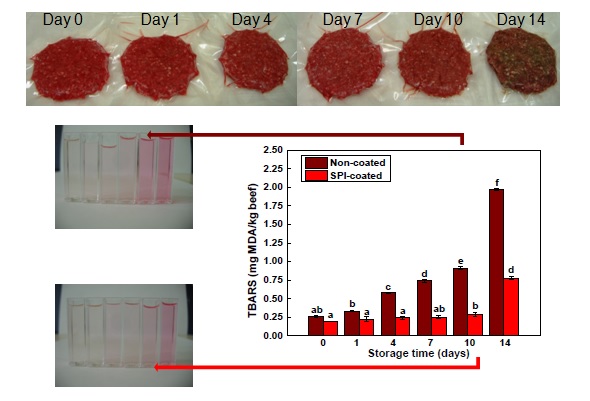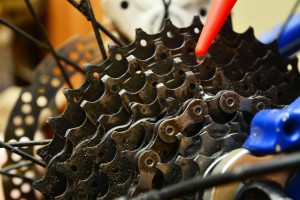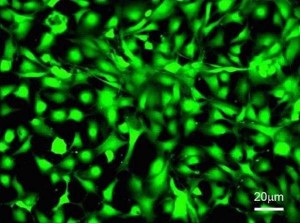In the early days of wooing my current beau, I tried to impress by claiming my homemade burgers were superior to all in the land. A bold claim, you’d agree, so the scientist in me amended that to ‘probably superior’. Anyway, I went to prepare said burgers with my secret recipe. In preparation, I defrosted the mince from the freezer that day, only to return to find the meat had gone a bit brown and smelled a bit, well, weird. (I still made the burgers and they didn’t taste so good, but as I said, it was the early days so we both pretended not to notice.)
Pedro Guerrero and colleagues have now developed a way of applying natural soy protein coatings to beef patties, extending their shelf-life stability. Writing in RSC Advances, they describe how these coatings provide a barrier to oxygen, delaying the formation of that brown colour (metmyoglobin) and unpleasant odour and taste.
Although synthetic antioxidants are known in the industry to prevent food spoiling, consumers are increasingly interested in the journey that their food has taken from farm to fork. Guerrero and co-workers successfully demonstrate the development and application of a soy-based coating to meat patties through the successful preservation of the meat compared to uncoated patties. They investigated the degree of lipid oxidation, microbiological content and texture changes. And, in the name of science, some people took part in a taste test, which I am sure was a burden.
As people try to eat as naturally as possible and reduce food waste, soy coatings could be a contender for increased customer satisfaction.
To find out more, click below to read the full article in RSC Advances.
Application of soy protein coatings and their effect on the quality and shelf-life stability of beef patties, Pedro Guerrero, Maurice G. O’Sullivan, Joe P. Kerry and Koro de la Caba, RSC Adv., 2015, 5, 8182-8189 (DOI: 10.1039/C4RA13421D)



















